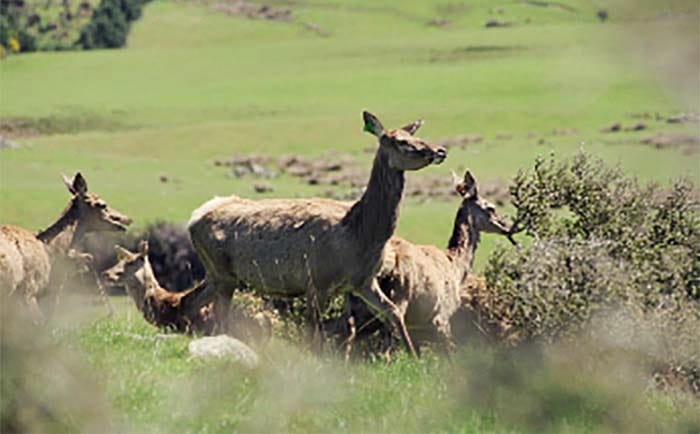The Fiordland Wapiti Foundation, Game Animal Council, and Department of Conservation (DOC) are partnering to provide 18,000kg of free-range wild Fiordland venison to New Zealand foodbanks and families in need.
Each year the Fiordland Wapiti Foundation, working with DOC, conducts a deer cull in Fiordland National Park removing up to 1000 animals.
“Weather permitting, by the end of next month, we will have removed 600 deer from Fiordland National Park for processing into 18,000 1kg wild venison mince packets. These are being distributed by a charitable supply chain distributor to foodbanks throughout the country. This will feed thousands of New Zealand families in need,” says Roy Sloan, Fiordland Wapiti Foundation President.
“With the loss of venison export markets, this will assist with keeping meat processing staff employed and help local helicopter operators while providing protein to Kiwi families in need. Managing the impacts that deer have on Fiordland is a win-win for both recreation and conservation,” says Tim Gale, Game Animal Council General Manager.
The project is jointly funded by the Department of Conservation and the Fiordland Wapiti Foundation with the Game Animal Council administering the programme.
DOC Chief of Governance Mervyn English says this is a great example of organisations working together to achieve an outcome with multiple benefits.
“Getting this project going was only possible because of the collaboration between the Game Animal Council, Fiordland Wapiti Foundation, DOC, and Fare Game Meat Processors,” English says.
“Safari Club International (NZ), New Zealand Deerstalkers Association, Central North Island Sika Foundation, Tahr Foundation and NZ Hunter Magazine have come on board and are helping with transportation and promotion.”
“Celebrity food writer Nadia Lim, leading Christchurch chef Richard Hingston and Ngāi Tahu have also designed some simple and tasty recipes to help inspire the recipient families to make the most out of the venison,” says Gale.
The recipes are available at: http://www.fwf.net.nz/fiordland-wapiti-area- venison-project/
As this project develops DOC and the Game Animal Council are starting to look at working with the recreational and commercial hunting sectors in other parts of the country to explore the possibility of expanding the programme to other parts of New Zealand.
“This is a win-win for conservationists, hunters, our foodbanks and the public in general. Kiwis just like the idea of working together to help each other out,” says English.
Background:
Fiordland Venison Project:
-
- 100 deer have already been removed from Fiordland National Park as part of a pilot project last month. Another five hundred deer will be removed and processed over the next four weeks.
- More than 3,500 families are already benefiting from the project. 3,500 1kg venison mince packets have been distributed to charities and foodbanks including the Southland Salvation Army, Kona Kai and Southland Food Bank. Meat from the pilot project has also been delivered to foodbanks within Westland, Otago and as far north as Christchurch.
- Another 15,000 families will benefit once the remaining 500 deer are recovered and processed. Most of this meat will be distributed throughout the main centres in the North Island.
Fiordland Wapiti Foundation:
-
- Since 2007, the Fiordland National Park Management Plan has allowed for community groups to run animal control programmes alongside DOC. The Fiordland Wapiti Foundation signed a 10-year management agreement with DOC in 2013. The agreement allows the Foundation to manage the impacts that deer have on Fiordland. The Foundation is required to submit an annual animal control plan each July, subject to the approval of DOC. Up to 1000 deer are controlled annually.
- The Fiordland Wapiti Foundation also undertakes predator control in Fiordland National Park and supports a trapping programme to protect whio.
Game Animal Council:
-
- The Game Animal Council is a statutory organisation representing the interests of the hunting sector with the objective to improve the management of hunting resources while contributing to positive conservation outcomes.

